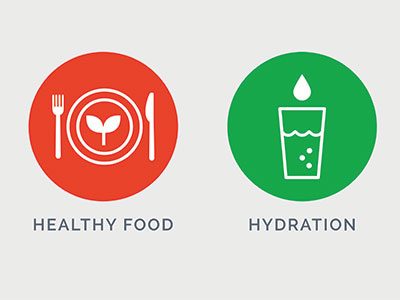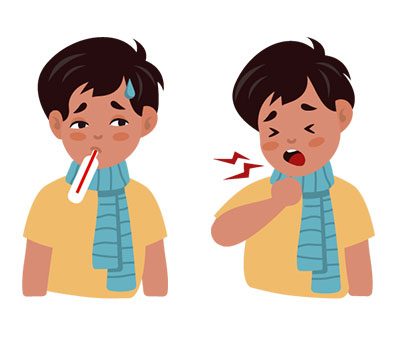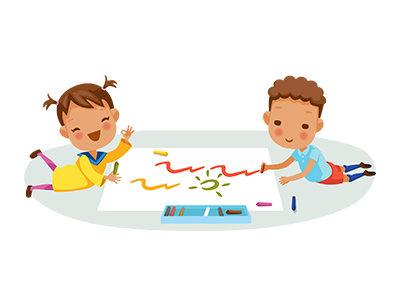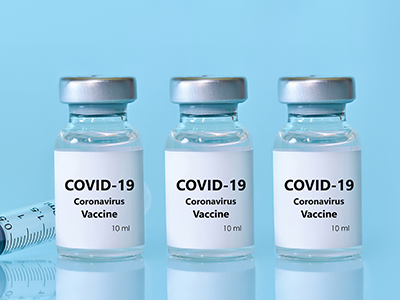Hepatitis is a term used to describe inflammation of the liver. It can be caused by many things from viruses to side effects from certain medications. Most often, it is caused by one of the five hepatitis viruses: A, B, C, D and E. Depending on the virus that caused it, hepatitis can spread through contact with blood and other bodily fluids or fecal matter. Here’s what you need to know about hepatitis in children.
The recent rise in hepatitis cases in children
Recently, the Centers for Disease Control and Prevention (CDC) issued a health alert about an increase in unexplained cases of hepatitis in children. In these cases, the hepatitis viruses were ruled out as the cause of illness. The CDC suspects that adenovirus 41 — a virus that normally causes stomach flu symptoms such as diarrhea, vomiting and fever — is causing the current cases of hepatitis, although health officials are still investigating.
Even though health officials are not certain adenovirus is causing the recent hepatitis clusters, parents can help prevent adenovirus transmission by encouraging their children to wash their hands often and avoid touching their face and mouth. Fortunately, these are many of the same measures we have been using to help prevent the spread of COVID-19.
If you are concerned about symptoms of hepatitis in your child — such as fever, loss of appetite, nausea, vomiting, abdominal pain, dark urine, joint pain and jaundice — contact your pediatrician.
What causes hepatitis in children?
Hepatitis in children can be caused by many things. Most cases are caused by the hepatitis viruses A, B and C. Other viruses that can cause hepatitis include cytomegalovirus, Epstein-Barr virus, herpes simplex virus, varicella zoster virus (chickenpox), enteroviruses, rubella, Adenoviruses and parvovirus.
Hepatitis can also result from things such as:
- a bacterial infection
- liver injury or damage
- abdominal trauma in the area of the liver
- an attack on the liver by the body’s immune system (autoimmune hepatitis)
- a problem with the liver itself
The hepatitis viruses
The three most common hepatitis viruses are hepatitis A, hepatitis B and hepatitis C. (Hepatitis viruses D and E are rare in the United States.)
Hepatitis A
This form of the hepatitis virus is passed by fecal-oral contact. It’s spread to children in the following ways:
- Eating food made by an infected person who didn’t wash their hands well after using the bathroom.
- Drinking water that is contaminated by infected feces.
- Touching an infected person’s feces or dirty diaper and then putting your hands near your mouth.
- Sharing needles or syringes.
Although hepatitis A can cause serious symptoms, it rarely leads to long-lasting liver damage. The CDC recommends that all children receive the hepatitis A vaccine when they reach 1 year of age. The vaccine is administered in two doses; the second shot is usually given six months after the first.
Hepatitis B
Hepatitis B is a more serious infection than hepatitis A and can lead to permanent liver scarring (cirrhosis), liver failure or liver cancer. It is spread when blood from an infected person enters another person’s body. This can happen through needlesticks and cuts from sharp instruments or by sharing personal items such as razors and toothbrushes. In the United States, the most common way hepatitis B is spread is through unprotected sex with someone who has the disease, or from sharing unsterilized needles. Babies can also catch the virus during pregnancy if their mother has the virus.
You can help protect your child by getting them vaccinated against hepatitis B. The CDC recommends giving the first dose to newborns in the hospital, with two to three additional shots given between 6 and 18 months of age.
Hepatitis C
Like hepatitis B, hepatitis C is a serious infection that passes through infected blood and body fluids. The most common way it is spread is via unprotected sex with an infected partner or by sharing drug paraphernalia such as needles. Mothers can also pass it to their babies during pregnancy.
Because there is no vaccine for hepatitis C, it’s important to educate your child about the risks of drug use, sharing needles and unprotected sex.
What are the symptoms of hepatitis?
Hepatitis symptoms may include:
- Flu-like symptoms
- Yellowing of the skin or the whites of the eyes (jaundice)
- Fever
- Nausea or vomiting
- Loss of appetite
- Not feeling well
- Stomach pain or discomfort
- Diarrhea
- Joint pain
- Sore muscles
- Itchy red hives on the skin
- Clay-colored stools
- Dark-colored urine
Because the symptoms of hepatitis resemble those of other health problems, it is important to take your child to their health care provider for a diagnosis.
How is hepatitis treated in children?
Treatment will depend on your child’s symptoms, age and general health. It will also depend on how severe the condition is and what is causing the hepatitis. The goal of treatment is to stop damage to your child’s liver and ease symptoms. Treatment may include:
- These can control itching, treat the virus or control an autoimmune disease.
- Supportive care. This includes eating a healthy diet and getting enough rest.
- Blood testing. This can tell if the disease is progressing.
- Hospital stay. This is done in severe cases.
- Liver transplant.This is done for end-stage liver failure.
How can I protect my child from hepatitis?
The best way to protect children against hepatitis is by making sure they receive the vaccines for hepatitis A and B.
You should also have age-appropriate conversations with your child about the risks associated with drug use, sharing needles and having unprotected sex.
 https://riseandshine.childrensnational.org/wp-content/uploads/2025/03/beach-feature.jpg
300
400
Rise and Shine
https://riseandshine.childrensnational.org/wp-content/uploads/2017/11/childrens_riseandshine_logo.jpg
Rise and Shine2025-04-01 11:42:192025-04-01 11:42:19Spring break travel safety: Protecting your family during the measles outbreak
https://riseandshine.childrensnational.org/wp-content/uploads/2025/03/beach-feature.jpg
300
400
Rise and Shine
https://riseandshine.childrensnational.org/wp-content/uploads/2017/11/childrens_riseandshine_logo.jpg
Rise and Shine2025-04-01 11:42:192025-04-01 11:42:19Spring break travel safety: Protecting your family during the measles outbreak





















Leave a Comment
Want to join the discussion?Feel free to contribute!